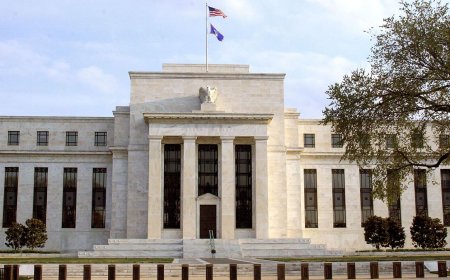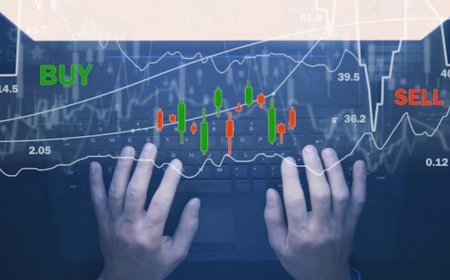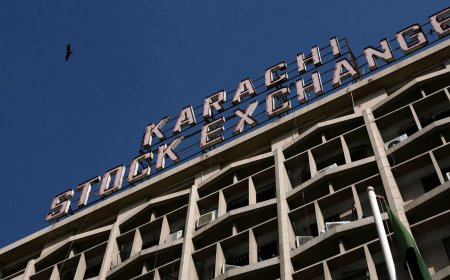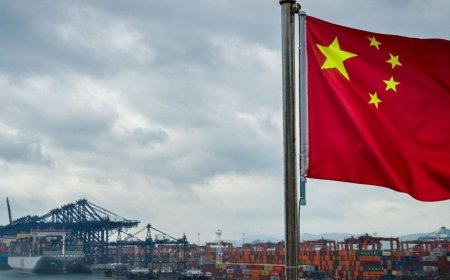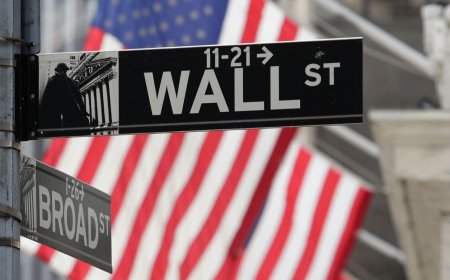Amazon Share Price Surges 7% Amid US-China Trade Deal and Expected 115% Tariff Cut
Amazon shares jumped over 7% on Wall Street as optimism surged following the US-China trade deal, which hinted at a possible 115% tariff cut. Here’s what it means for Amazon and the broader tech sector.

Amazon Share Price Jumps Over 7% on US Markets After US-China Deal Shows an
Upcoming 115% Tariff Cut
Introduction: Amazon Soars as Trade Winds Shift
In a remarkable upswing for US equity markets, Amazon.com Inc. led tech stocks higher, soaring over 7% in a single trading session. This robust rally came on the heels of a tentative trade agreement between the United States and China, a deal that promises to reduce tariffs by up to 115% on specific technology and consumer goods.
The renewed optimism over geopolitical de-escalation, coupled with easing trade frictions, triggered a wave of investor buying across the board—but none as visibly as Amazon. As one of the world’s largest multinational e-commerce giants, Amazon stands to benefit enormously from smoother trade channels and lower input costs.
Section 1: The Context – What Happened with the US-China Deal?
The latest trade deal announcement between the US and China marks a turning point in global economic relations. After several months of icy standoffs, both countries signaled a willingness to wind down the ongoing tariff war.
Key Deal Highlights:
-
Up to 115% tariff rollback expected on certain categories, including tech, retail imports, and e-commerce infrastructure goods.
-
IP protection enforcement—a critical sticking point in earlier rounds—is now included in the treaty.
-
Market access for American firms in China to be expanded, particularly in logistics, cloud computing, and retail.
This comprehensive scope has galvanized investor enthusiasm, with Amazon emerging as one of the biggest beneficiaries of the truce.
Section 2: Amazon’s 7% Rally – Breaking Down the Numbers
Amazon’s share price closed at $148.32, up 7.2% from the previous close, adding over $90 billion to its market cap in a single day. The surge was among the largest single-day gains for Amazon in the past year.
Contributing Factors:
-
Anticipated tariff cuts on Chinese-manufactured electronics and goods that Amazon sells heavily in the US.
-
Lower costs for data center equipment, much of which is sourced from China and Southeast Asia.
-
Renewed hope for faster cross-border logistics and potential expansion of Amazon Web Services (AWS) in Chinese regions.
Amazon’s performance also pushed the Nasdaq Composite Index up by 3.6%, with tech peers like Apple, Microsoft, and Nvidia tagging along for the ride.
Section 3: How Tariff Cuts Directly Help Amazon
Though Amazon does not disclose the geographic source of every product it sells, analysts estimate that as much as 40% of the goods on its marketplace are either imported or have components sourced from China.
Here’s how a 115% tariff cut could impact Amazon’s bottom line:
-
Cost Reduction: Lower tariffs on electronics, toys, apparel, and gadgets reduces COGS (Cost of Goods Sold).
-
Price Advantage: Allows Amazon to pass savings to consumers or preserve higher margins.
-
Third-Party Sellers: Many independent sellers on Amazon source goods from China. Lower tariffs help strengthen their profitability, leading to higher platform engagement.
-
AWS Expansion: With reduced restrictions and lower costs, Amazon Web Services can scale faster across Asia, improving revenue from cloud infrastructure.
Section 4: Analyst Take – A Turning Point for Amazon’s Supply Chain
Several top market analysts weighed in on the bullish implications for Amazon:
“This is exactly what Amazon needed. The tariff truce removes supply chain friction and boosts both retail and AWS prospects,”
said Olivia Grant, tech equity strategist at Morgan Stanley.
“Amazon’s 7% jump isn’t just a flash rally—it reflects long-term tailwinds from smoother trade and reduced overheads,”
commented Ramesh Sharma, lead researcher at MarketPulse India.
Many analysts have already begun revising their target prices for Amazon upward, with some setting a 12-month target of $180–$190, expecting further gains if the trade framework holds.
Section 5: Amazon’s Logistics Empire and Trade Relief
Amazon’s scale isn’t just in product listings—it’s in logistics and supply chain mastery. The trade deal's positive implications for freight tariffs, customs processes, and shipping costs are a huge boon for the company.
Trade Deal Impact on Logistics:
-
Lower import duties on inventory being stocked in US warehouses.
-
Faster clearance of goods at ports, reducing holding costs.
-
More competitive international shipping rates, especially to and from China.
This means faster delivery for Prime customers, lower fulfillment costs, and enhanced scalability for Amazon’s international sellers.
Section 6: How the Market Reacted – Broader Tech Rally
Amazon wasn’t alone in riding the trade wave. Tech stocks across the board surged as the trade truce signaled stability for future revenue and sourcing models.
Top Movers in Tech:
-
NVIDIA: +6.8%
-
Apple: +4.5%
-
Meta Platforms: +5.2%
-
Alphabet (Google): +3.9%
Together, these gains lifted the Nasdaq by 3.6% and S&P 500 by 2.6%, marking one of the most optimistic trading sessions of the year.
Section 7: What This Means for Consumers
A less talked-about but important implication is the benefit this deal provides to consumers:
-
Cheaper product listings on Amazon.com as input costs decline.
-
Expanded inventory, especially in electronics, gadgets, and apparel.
-
Faster delivery on high-demand goods previously slowed down due to customs delays.
If these cost savings are passed down, Amazon could see an uptick in order volumes, pushing quarterly revenues even higher.
Section 8: Investor Sentiment – A Shift from Defensive to Growth
The trade détente has led investors to pivot from defensive posturing to growth exposure, especially in tech and consumer discretionary.
Amazon, being both a retail behemoth and cloud infrastructure leader, finds itself at the center of this investment theme.
Signs of Sentiment Shift:
-
Inflows into Amazon-focused ETFs and mutual funds surged by 15% day-over-day.
-
Options volume hit a 6-month high, with bullish call positions dominating.
-
Google Trends showed a spike in search queries like “Amazon stock buy” and “Is Amazon a good investment now?”
Section 9: What’s Next for Amazon? Eyes on Q2 Guidance
With Q1 earnings already posted, all eyes now turn to Amazon’s Q2 guidance, which may factor in these positive developments.
Potential Updates to Watch:
-
Revisions in revenue growth projections.
-
Updated gross margin forecasts due to lower sourcing costs.
-
Expansion announcements for AWS in Asian markets, including China and Southeast Asia.
If Amazon confirms that the trade relief is translating into measurable earnings upside, the stock may find further momentum through Q2 and Q3.
Section 10: Risks to Consider
While the deal is promising, risks remain:
-
Implementation hurdles: Both governments must still ratify and monitor the deal.
-
Geopolitical flashpoints: Tensions could resurface, reversing optimism.
-
Regulatory challenges: Amazon still faces antitrust scrutiny in both the US and Europe.
That said, the current sentiment favors risk-on positioning—with Amazon now reemerging as a high-conviction buy for many global investors.
Amazon’s Rally Reflects Trade-Driven Optimism and Long-Term Tailwinds
Amazon’s 7% stock surge isn’t just a number—it’s a reflection of broader market faith in renewed global cooperation. As one of the companies most exposed to global supply chains, Amazon stands to gain significantly from tariff rollbacks, faster shipping, and increased retail volumes.
For long-term investors, this may just be the beginning. As trade clarity emerges, Amazon's business model—diversified, scalable, and globally rooted—puts it in a position to outperform in a stabilizing global economy.
What's Your Reaction?
 Like
0
Like
0
 Dislike
0
Dislike
0
 Love
0
Love
0
 Funny
0
Funny
0
 Angry
0
Angry
0
 Sad
0
Sad
0
 Wow
0
Wow
0





























































